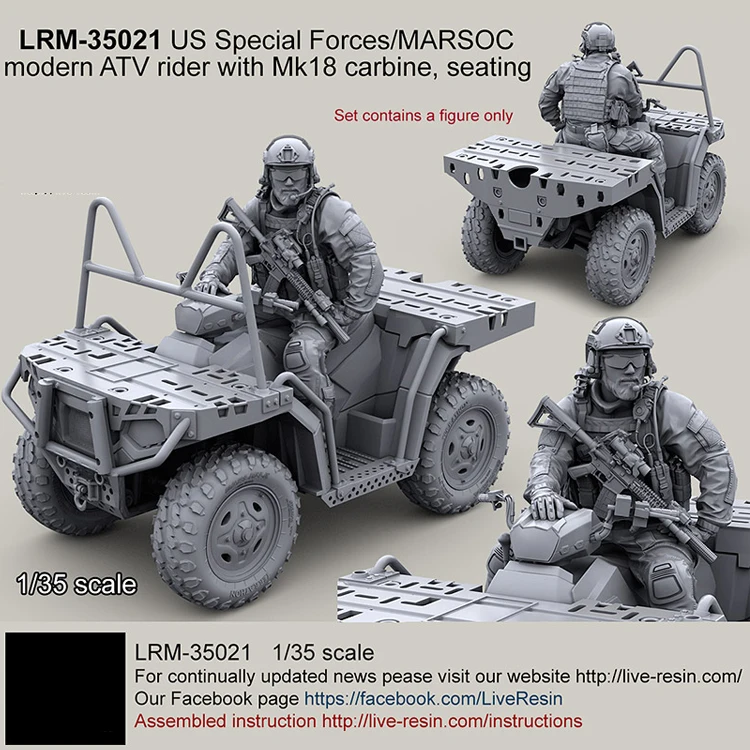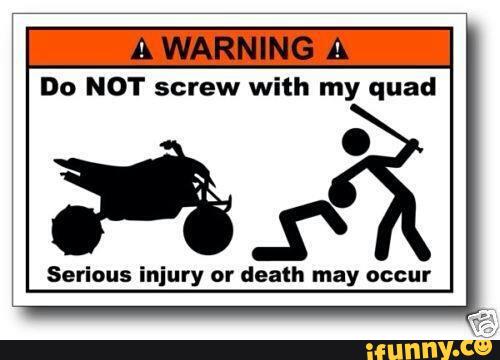Understanding the difference between hours and miles in an ATV and how they relate to each other can be confusing. How many hours per mile is normal? Is there a way to convert hours to miles? What do these numbers mean, and what can they tell you about the bike’s condition? These are some of the questions we’ll look into.
To help determine what hour-to-mile ratio is normal, I’ve looked up a few real-life examples on various ATV forums, and ATV marketplaces. I’ve also included the readings on my own Polaris Sportsman.
| Make and Model | Miles | Hours | Mile-to-Hour Ratio | |
| Honda Rancher 420 | 190 | 79 | 2. | |
| Honda Rancher (unknown engine size) | 885 | 172 | 5.1:1 | |
| Honda Foreman (unknown engine size) | 5000 | 2000 | 2.5:1 | |
| Polaris Sportsman 500 | 20000 | 1800 | 11:1 | |
| Polaris Sportsman XP 1000 (mine) | 951 | 100 | 9.5:1 | |
| Polaris Sportsman 850 | 2700 | 190 | 14.2:1 | |
| Polaris Sportsman 570 | 440 | 50 | 8.8:1 | |
| Can-Am Outlander 650XT | 225 | 25 | 9:1 | |
| Can-Am Outlander 1000 | 270 | 32 | 8. 4:1
4:1 | |
| Can-Am Outlander 800 | 375 | 75 | 5:1 | |
| Can-Am Outlander 800 | 1400 | 100 | 14:1 | |
| Can-Am Outlander 800 | 477 | 77 | 6.2:1 | |
| Honda Foreman 500 | 5500 | 1500 | 3.6:1 | |
| Can-Am Outlander 800 XT | 3100 | 155 | 20:1 | |
| Can-Am Renegade 800 | 1812 | 76 | 23.8:1 |
According to my findings, the mile-to-hour ratio in ATVs varies vastly, ranging from 2. 4:1 all the way up to 23.8:1. The Can-Am Renegade with a ratio of 23.8:1 has traveled almost ten times as far as the Honda Rancher with a ratio of only 2.4:1. Another way to see it is the average speed of the Can-AM is about ten times that of the Honda.
4:1 all the way up to 23.8:1. The Can-Am Renegade with a ratio of 23.8:1 has traveled almost ten times as far as the Honda Rancher with a ratio of only 2.4:1. Another way to see it is the average speed of the Can-AM is about ten times that of the Honda.
I consider myself an average ATV rider with some farm work, some trail riding, some technical forest-riding, and even some mudding. With an hour-to-mile ratio of 9.5:1, I find myself in the middle of the scale.
Related: How Many Hours Do ATVs Last? What is Considered High?
What if you know the hours on your ATV but want to know how this transfers to miles? Is there a good way to convert hours to miles?
There is no way to directly convert an ATVs hours to miles and vice versa without knowing how fast the bike has been ridden. However, an ATV typically travels from 10 to 15 miles per hour on average. This equals a typical conversion rate in the range of 1:10 to 1:15.
Some ATVs spend most of their life at mid to high speeds on trails or are used in racing. These bikes typically have a low hour count relative to miles traveled.
Other ATVs are run mostly at slow to moderate speeds for farm work or technical riding such as rock crawling. These bikes typically have a higher hour count relative to the miles they have traveled.
Depending on your ATV’s primary usage, you can use these general guidelines to go from hours to miles or back.
So if you own an ATV that’s primarily been used for higher speed trail riding with 100 hours on it, you find the mileage by multiplying the hours by 20. 100 hours times 20 equalts to an estimated 2000 miles.
If you know the mileage but not the hours, you divide the 2000 miles read from the instrument panel by 20, giving an estimated runtime of 100 hours.
Again, these are just some general guidelines to give you a ballpark estimate. There is no way to do a precise conversion between miles and hours.
The hours on an ATV, often called engine hours, measure how many hours the engine has been turned on. The metric acts as the primary marker for keeping track of service intervals and overall vehicle wear.
The miles on an ATV are registered by the odometer and tell the total distance the vehicle has traveled. The metric is used as a secondary marker for keeping track of service intervals. With most ATVs, the mileage offers a less accurate indicator of vehicle wear and overall condition than the engine hours.
Keeping up with service and maintenance is crucial to ensure proper vehicle operation and optimal service life. This applies to all types of vehicles and machinery, ATVs included.
The manufacturer knows from experience and tests how long each component will last on average before it wears out. They also know at what intervals we need to make various adjustments and when to replace filters, oils, and fluids.
They also know at what intervals we need to make various adjustments and when to replace filters, oils, and fluids.
This information is systemized into a periodic maintenance and service schedule to track when to perform the specified service and maintenance tasks. This ensures safe and proper vehicle operation and enables the manufacturer to offer a warranty provided that the schedule is completed and properly documented.
The big question is how to track when the next service is due or when to replace various components.
We can quantify and measure different aspects such as distance traveled, hours of operation, units produced, and days, weeks, and months in use.
A typical ATV maintenance chart uses three different metrics to determine the maintenance intervals: hours, miles, and calendar – whichever comes first.

Which metric gives the most accurate representation of wear and tear is not the same in all vehicles.
As you may have noticed, with cars and other fast-moving on-road vehicles, we usually only talk about mileage and not engine hours to keep track of service intervals or when we’re considering the vehicle’s overall condition.
While most modern cars do count engine hours, the metric is not as relevant to determining wear and tear on components such as brakes, bearings, and axle joints. The engine hours don’t say how far the vehicle has traveled, only how many hours the engine has been running.
A car spends most of its time cruising at highway speeds and less time idling at a near standstill. The overall vehicle wear correlates well with distance traveled (mileage).
Also, for most people, the concept of mileage is more relatable than hours. Cars are primarily used for transportation from A to B. We use miles not only to keep track of when the next service is due but also how far it’s to the next city or far we can go without refueling.
That’s why using miles makes more sense in on-road vehicles such as cars and motorcycles.
With off-road vehicles, heavy equipment like excavators, or other vehicles that spend much of their time at medium to slow speeds or even operating at a standstill for hours, the mileage doesn’t provide a good representation of vehicle wear.
On these vehicle types, the engine hours typically offer a more accurate indicator of wear and tear than the mileage.
ATVs fall somewhere in between a car and an excavator. They typically don’t travel as far and at such highway speeds as most other on-road vehicles, but they usually move more than an excavator.
What’s unique about ATVs is the wide range of riding applications. The miles, hours, and the ratio between them vary quite a lot depending on how the bike is used. By using hours miles, depending on which comes first, we get a more flexible maintenance schedule that ensures proper maintenance regardless of how you use your ATV.
Please note that the service manual’s recommended intervals are based on average riding conditions. If your bike is subject to more severe use, it will wear faster and needs to be serviced more frequently.
In an ATV with high mileage or high hours, it is generally a good idea to look out for signs of wear and tear, as both of these metrics tell us something about how much the vehicle has been used.
However, the numbers by themselves tell only part of the story. High mileage or high hour count doesn’t always mean that the bike is worn out and in poor condition.
You also need to consider how well the bike is kept up with maintenance and overall care. A well-maintained ATV with relatively high mileage or hours could offer a much better deal than one that’s used only half as much but is neglected when it comes to service and upkeep.
Another critical factor is how hard the ATV was used previously.
One hour at near idle putting around the farm is quite different from riding one hour flat out on a track day. The latter causes more wear to components such as bearings, tires, engine, transmission, and suspension.
Riding applications that cause excessive wear and tear (according to the Polaris user manual):
Comparing the hours of runtime to miles traveled can indicate how aggressive precious owners drove the ATV.
While there is no rule without exceptions, a high hour, low mileage ATV has likely not been ridden as hard or aggressively as one with low hours and high mileage.
Some ATVs count hours, some count miles, while others count both. The hours are typically used as an addition to the mileage to keep track of operating time between service intervals.
However, when an ATV is listed for sale, they typically go by miles rather than hours. Most sellers also include the hours as it’s a good indicator of the bike’s condition and how hard it has been ridden.
Most sellers also include the hours as it’s a good indicator of the bike’s condition and how hard it has been ridden.
Not all ATVs use the same method to count the hours.
Most ATVs count hours only when the engine is running, including active runtime and idling. However, some models, such as some from Can-Am, count hours whenever the key is turned on and even if the engine is not running.
Therefore some Can-Ams may have a disproportionally high hour count from intentionally or unintentionally leaving the bike for extended periods with only the ignition on.
Disclosure: We may get commissions for purchases made through links in this post.
If you’re new to the Polaris Ranger, something you may want to familiarize yourself with is its hours. Regular checking ensures that proper maintenance is done when needed.
How do you check hours on the Polaris Ranger? The instrument cluster on your vehicle will tell you how many hours your Polaris Ranger engine has. The instrument cluster on most of the popular Ranger models will include a speedometer, mode button, indicator lamps, and a rider information center.
The instrument cluster on most of the popular Ranger models will include a speedometer, mode button, indicator lamps, and a rider information center.
The engine hour meter is found by toggling through the display via the mode button. The rider information center’s information display area is where the engine hour meter is located. You can also find the programmable service hour interval, trip meter, and odometer there.
The instrument cluster looks a bit different on the XP 1000, XP Turbo S, and Turbo models. They also have two extra features: toggle buttons and a tachometer. However, the rider information center is still where the engine hour meter is located. By pressing the toggle buttons, you can scroll through the modes.
The hour meter on the Ranger EV is found below the battery discharge indicator and above the indicator lights on the vehicle console. Sometimes, it can also be found in the instrument cluster’s Display Area 2. In such situations, the up and down buttons located at the bottom is what you should use to scroll through the information on the display until you find the engine hour meter.
In such situations, the up and down buttons located at the bottom is what you should use to scroll through the information on the display until you find the engine hour meter.
Most people usually believe that Polaris parts are costly. They’re not wrong; after all, most of them don’t come cheap. However, that doesn’t mean high mileage machines are always all that bad.
But what exactly are high miles on a Polaris Ranger?
A lot of people will agree that a Polaris Ranger that has 10,000 miles on it is generally one considered to have high miles. Why? It’s simply because, at 10,000 miles, many of them will need a new motor alongside other new parts. It means that it has been running for quite a while.
A sled, on the other hand, is considered high miles when it hits 4,000-5,000 miles. However, they can go up to 7,000 miles before needing a new motor.
Anyway, there’s no exact number, but a good average you can work with is around 7,000 miles. A Polaris Ranger that has this amount of miles on it can and should be considered a high miles vehicle.
A Polaris Ranger that has this amount of miles on it can and should be considered a high miles vehicle.
A new vehicle’s break-in period is its first 20 hours of operation: that, or the time it took to use up the first two tanks of gasoline. A proper break-in period is undoubtedly one of the most important things you can do on your part at the start. Treating your new engine carefully at the beginning will result in a longer lifespan and more efficient performance of your car’s motor.
Drive components and close-fitted engine parts will be damaged if the heat buildup is excessive during the first three hours of operation. Therefore, you don’t want to operate your vehicle at high speeds or full throttle during this period. Also, you can cause serious engine damage if you use the wrong oils. Ideally, you want to use Polaris Premium 4 Oil as it’s specifically designed to cater to these 4-cycle engines.
 Drivetrain and Engine Break-In
Drivetrain and Engine Break-InBelow are some useful tips to consider:
A proper drive belt and clutches break-in will ensure better performance and a longer lifespan for your vehicle. You can break in the belt and clutches by driving at slow speeds during break-in periods. Pull only light loads as well. Avoid high-speed operation and aggressive acceleration as much as you can during this period.
Pull only light loads as well. Avoid high-speed operation and aggressive acceleration as much as you can during this period.
If your belt fails, you should first clean all the debris and dirt from the PVT outlet and intake ducts as well as the engine and clutch compartments before putting in the new one in.
For the first 50 miles, you should drive at slower speeds when operating the vehicle. Again, only carry light loads. Avoid prolonged operation at specific RPMs, aggressive acceleration, and high-speed operation during this break-in period.
For the first five miles or eight kilometers, drive at slower speeds once again. Also, avoid aggressive acceleration, prolonged high throttle, low-speed operation, and high-speed operations during this period as well.
For the first 50 stops, only apply a moderate braking force. Overly forceful or aggressive braking on a new brake system could damage the car’s rotors and brake pads.
A UTV is a little different from its ATV cousin. It is worth taking a closer look at some of these differences.
For starters, the most significant difference between UTV and ATV setups come in the seating and steering designs. UTVs are operated using steering wheels, while ATVs have motorcycle-like handlebars. You ride an ATV like you would a motorcycle while an ATV drives like you would a full-size truck.
You even wear a seatbelt in the latter. Your typical UTV machine will also have a roll cage or roll bar for increased safety. Sometimes, it can even go further and have both doors and a windshield.
Another thing is that an ATV is typically much smaller than its UTV counterpart. A UTV often has the capability of carrying a lot more cargo and passengers. Polaris UTVs come in six-seater, four-seater, and two-seater models. If you’re one who likes riding solo, there’s also a single-seater option.
The last difference lies in the comfort and physicality of operating a UTV versus an ATV. An ATV’s handling and straddle seating means a ride that’s a little more physically demanding compared to the UTV’s car-like driving system. The UTV’s cab seating offers a drive seating that’s way more comfortable, especially if you’re traveling many hours and across many miles. It’s also relatively easier to both enter and exit.
An ATV’s handling and straddle seating means a ride that’s a little more physically demanding compared to the UTV’s car-like driving system. The UTV’s cab seating offers a drive seating that’s way more comfortable, especially if you’re traveling many hours and across many miles. It’s also relatively easier to both enter and exit.
RANGER vehicles are currently the best-selling UTVs on the planet. They are designed to effectively tackle backwood trails, muddy pastures, and the like. A full-size Ranger, such as the 570 for instance, is unmatched both in the value it brings and its performance. This is seen through its class-leading, engine generating 44HP 570cc ProStar engine, True On-Demand AWD system, and Electronic Fuel Injection.
Anyway, we have a couple recommendations for some of the top products for the Polaris Ranger. They’re as follows:
 An aggressive and rugged roof, this is ideal for those who want to shade themselves from the sun and protect themselves from flying debris and rain.
An aggressive and rugged roof, this is ideal for those who want to shade themselves from the sun and protect themselves from flying debris and rain. You are not likely to come across anything that can break it on your ride.
You are not likely to come across anything that can break it on your ride.The popularity of these super fun, robust, and versatile vehicles known all around the globe as UTVs has skyrocketed in the last ten years or so. Nowadays, they have become a very common sight. You can spot them anywhere from family playgrounds and farm fields to dune playgrounds and backcountry tracks.
If you’re considering to own a UTV, or if you have your own Polaris Ranger already, hopefully, this article has helped you know how to check the hours on your vehicle.
If engine hours were equal to mileage, or simply calculated by the time the engine of a motorcycle (ATV, snowmobile or tractor) was running, no one would ask: what is a motorcycle hour. This question is usually asked by the owners of pit bikes, motocross motorcycles, snowmobiles, quadrics and motorized dogs, and especially motoblocks and motor generators, opening the maintenance manual for their equipment. In the "Kama Sutra" for each specific model of motor vehicles there is a section "Change the engine oil", which indicates the service interval. Specified in kilometers (mileage), hours, or both. In the first and third cases, it is easier to look at the odometer showing the mileage, and in the second - at the hour meter. If the equipment is equipped with it, and it works - everything is in order, you can not bother with how to count these hours, the electronics will calculate everything by itself. In the absence of a counter, you will have to study the theory a little.
In the "Kama Sutra" for each specific model of motor vehicles there is a section "Change the engine oil", which indicates the service interval. Specified in kilometers (mileage), hours, or both. In the first and third cases, it is easier to look at the odometer showing the mileage, and in the second - at the hour meter. If the equipment is equipped with it, and it works - everything is in order, you can not bother with how to count these hours, the electronics will calculate everything by itself. In the absence of a counter, you will have to study the theory a little.
One motor hour for a gasoline or diesel internal combustion engine is a certain length of time that the engine will work under a certain load. The greater the load, the higher the engine speed, the faster the moto-hour will “wind up”. The lower the load, and, accordingly, the lower the operating speed, the longer the moto-hour will “stretch”.
Important: there is no single formula for calculating engine hours for all types of equipment! Motohour is not equal to an hour of normal time! And it is not equal to 60 km traveled per hour at an average speed, as it is simplified when calculating TO where 250 m / h \u003d 15 t. km. For each motor, the hour is calculated individually. There is only a general principle of how to do it.
km. For each motor, the hour is calculated individually. There is only a general principle of how to do it.
Engine hours for internal combustion engines can be compared with fatigue for a person: if you walk the same distance at a slow pace, or run, in the second option you will get tired in less time to the same state. But also, if you are faced with the task of overcoming 1 km on a flat road and 100 meters up the stairs, regardless of the speed and time spent, you will get tired more and earlier on these 100 meters.
Having done some work, a person can rest and recover, and the engine needs maintenance after work. Depending on the type (gasoline or diesel), volume, and power, the operating standards for different engines differ. Therefore, for each specific model, the manufacturer writes its resource before maintenance, or general, before overhaul - in hours.
To put it simply, for stationary engines delivering peak power over a reasonably flat RPM range, 1 hour is calculated as:

But this is very, very simplified, and is not suitable for calculating, say, the oil change interval in a motorcycle or quadric engine, which constantly experiences variable loads and operates in different temperature conditions.
For a more accurate calculation of the time when it is time for your motorcycle (quadric or generator) to carry out maintenance, there is Kublin's formula :
Actual mileage (in km) = (244.38 x TBN x Vm x Vdv) / ( L100 x Radar)
Where:
Here, a big role is given to the quality and type of the oil itself, the resource of which is also indicated in hours by the manufacturer. Mineral oils usually have less resistance and rarely "pass" over 150 hours. Semi-synthetics and hydrocracking - work up to 250, and good synthetics - from 300 to 500 m / h. If you wish, you can roughly translate engine hours - into a run to maintenance, multiplying the estimated figure by the average speed at which you drive. But this will also be a very, very conditional calculation. Because for engines of different sizes and capacities, for the same 5 tons of km, wear will vary significantly.
Mineral oils usually have less resistance and rarely "pass" over 150 hours. Semi-synthetics and hydrocracking - work up to 250, and good synthetics - from 300 to 500 m / h. If you wish, you can roughly translate engine hours - into a run to maintenance, multiplying the estimated figure by the average speed at which you drive. But this will also be a very, very conditional calculation. Because for engines of different sizes and capacities, for the same 5 tons of km, wear will vary significantly.
In order to calculate the service interval on vehicles whose engine wear does not depend on mileage, or depends, but not directly proportional. For example, a working gas generator, peacefully standing in the corner of a garage, has no run, but winds up motorcycle hours. Or a small “two strong” outboard motor - it will not be possible to “change the oil every five thousand” in any way, it will rather fall apart than live to such a run. This also includes children's ATVs, motorized towing vehicles, mowers and other small-capacity vehicles that work a lot, but do not “run over” even one “thousand” km per season. And given the significant difference in the load, which can change even at one kilometer (ride up or down the slope, with or without a passenger, swim with or against the current) - a simple calculation of the engine running time is also not enough.
And given the significant difference in the load, which can change even at one kilometer (ride up or down the slope, with or without a passenger, swim with or against the current) - a simple calculation of the engine running time is also not enough.
For a motocross bike not equipped with an odometer, the hour meter is the only instrument that indicates when it is time for service. By the number of hours, the replacement of filters, oils in the engine and box, candles, and piston rings is regulated. An approximate resource to the "capital" for off-road equipment is also indicated in hours. Not to be confused with " machine hours ": This is a unit of measure for construction or road equipment used to calculate fuel, rental or labor costs.
Another aspect where these incomprehensible “moto-watches” are important is the assessment of the state of motorcycle equipment, more precisely, the resource of its motor when buying from hand, used. To understand the conditional 100 hours traveled is how many, many or few, for a particular pit bike, snowmobile or ATV, you need to look at its owner's manual. Of course, the data could be reset, but then the discrepancy between the indicators of the counter and the general condition - wear of rubber, steering wheel grips, seats, plastic will catch your eye.
To understand the conditional 100 hours traveled is how many, many or few, for a particular pit bike, snowmobile or ATV, you need to look at its owner's manual. Of course, the data could be reset, but then the discrepancy between the indicators of the counter and the general condition - wear of rubber, steering wheel grips, seats, plastic will catch your eye.
Hours are calculated either accurately, by electronics, taking into account the number and speed of revolutions of the crankshaft or ignition strokes, or, approximately, by calculating the amount of fuel used, taking into account the mileage, and the mode of operation of the engine. The on-board computer of modern ATVs, snowmobiles and motorcycles automatically counts engine hours and issues a warning about an upcoming maintenance. The BC takes data from the ABS sensors, crankshaft speed and coolant temperature, if any, or oil in the crankcase, if the motor is an air vent.
The most primitive way to find out how many hours a motorcycle engine has been running is to divide its mileage by its average speed. For a boat motor or generator, this method, of course, will not work - it’s easier to calculate engine hours by consumption. To do this, however, it is necessary to remember the amount of fuel consumed from the moment of the first launch, which is difficult. Engine hours - in kilometers are translated conditionally, using the same user manual, which indicates how many liters per 100 km the equipment “eats”. It is always necessary to add 15-20% to the nominal flow, then it will turn out closer to the actual one.
For the vast majority of off-road and household motor vehicles, the calculation is carried out by an electronic hour meter - a compact, inexpensive device, often combined in one housing with a tachometer. It is placed in a conspicuous place, its testimony is easy to read and unambiguously understood. The controller simply "accumulates" motor-hours from the moment of the first start and is reset manually - during maintenance. Depending on the model, counters are programmable or not, designed to count the hours of two and four-stroke engines.
The controller simply "accumulates" motor-hours from the moment of the first start and is reset manually - during maintenance. Depending on the model, counters are programmable or not, designed to count the hours of two and four-stroke engines.
By type, the hour meter is electronic-mechanical, electronic (induction) and vibration. The first option is used mainly in tractors and is rarely found on small motor vehicles:
An electronic meter is attached by a sensor (signal wire) to a high-voltage wire and reads the pulse of the generated spark, and with its body it “lives” on the steering wheel or in the tank area.
Vibrating - fastened directly by the body to that part of the engine or its lining, which most clearly transmits vibrations from work. This counter is more often used for diesel engines:
Induction option - can only be used in engines with a spark ignition system: gasoline and LPG. If the motorcycle is not equipped with a factory controller, you can install it yourself. It is not difficult, the main thing is to read and understand the instructions. The functionality of most electronic motor hours is the same: only two buttons and a 4-5 digit display.
If the motorcycle is not equipped with a factory controller, you can install it yourself. It is not difficult, the main thing is to read and understand the instructions. The functionality of most electronic motor hours is the same: only two buttons and a 4-5 digit display.
Typical settings for an induction meter with a tachometer - mode selection:
The device works automatically, starting with the engine. There are more complicated options, designed for multi-cylinder engines, and simpler ones - only for single-cylinder 2-stroke engines, without a tachometer, without settings. Which hour meter to choose depends entirely on the type of motor. Of the additional options - be sure to make sure that there is good moisture protection. A clock with a tachometer is usually powered by a built-in battery.
Electric ATVs are rapidly gaining popularity due to their economy and environmental friendliness. But many riders still do not know how to charge an ATV on a battery. Improper charging reduces the battery life or the battery loses its capacity quickly. Therefore, let's figure out how to charge a children's ATV and consider the key recommendations of experts.
There are two ways to recharge the ATV battery. The first and easiest is to connect the charger to the appropriate connector. All electric cars and scooters are charged in a similar way, although not all quadrics have a similar socket.
If the ATV does not have a charging port, the rider will have to connect the battery directly to the charging station. To do this, you need:

It is important to note that lithium batteries have a charge control board. This means that after a full charge, the process stops. Although overcharging the battery is still not recommended.
Another important question many riders are wondering is how to charge an ATV battery with an in-car charger. Yes, such a procedure is possible, but you need to properly configure the charger. For recharging, you can only use devices with adjustable charging current and the ability to set its minimum level (0.5-0.7 A).
Important : The optimal current for battery charging is 1/10 of the battery capacity (in Amps).
Each ATV's manual lists the optimum battery charging time. On average, this figure is 6-12 hours. The charging time depends on the generation of the battery, its capacity and the characteristics of the charger. Don't forget to charge the battery, though. If the battery has 30-40% capacity left, the recharging time should be reduced.
On average, this figure is 6-12 hours. The charging time depends on the generation of the battery, its capacity and the characteristics of the charger. Don't forget to charge the battery, though. If the battery has 30-40% capacity left, the recharging time should be reduced.
But what if you don't know how long to charge your ATV battery? In this case, you need to almost completely discharge the battery and charge it for 8 hours. After that, the battery should be installed on the quadric, and the charge level should be assessed. If the indicator shows 100%, next time you need to charge the battery for 6-7 hours. In this way, you can determine the optimal recharging time.
Also remember that overcharging is the main enemy of batteries. It is strongly not recommended to leave the battery connected to the network for 15-20 hours. This leads to a decrease in battery capacity and, accordingly, a decrease in the operating time of the quadric.
Knowing how long it takes to charge an ATV, you can make a schedule for recharging it. For example, the battery can be connected to the network in the evening or after each trip. You can also purchase a replacement battery, thereby increasing the riding time on the ATV.
For example, the battery can be connected to the network in the evening or after each trip. You can also purchase a replacement battery, thereby increasing the riding time on the ATV.
The battery of any electrical equipment must be properly maintained. Violation of the recommendations may lead to a decrease in battery capacity or damage to it. To avoid such problems, it is recommended:
Separately, it is worth mentioning the "buildup" of the battery.